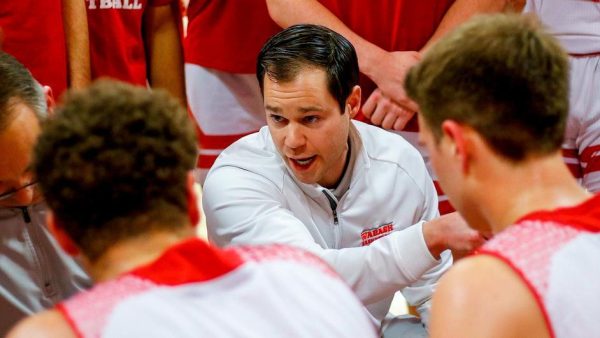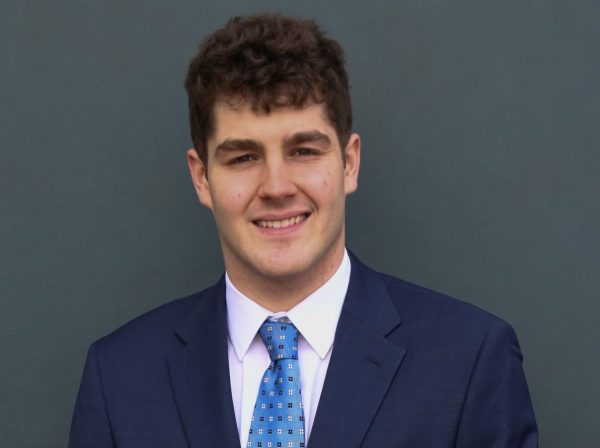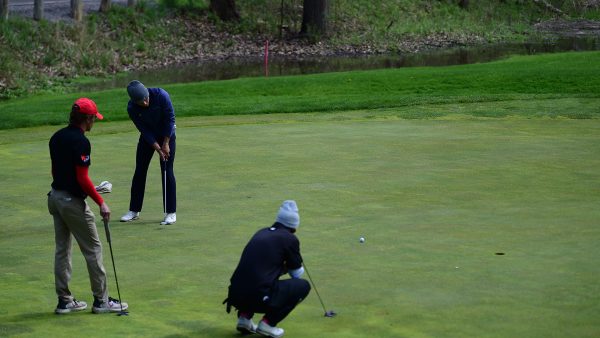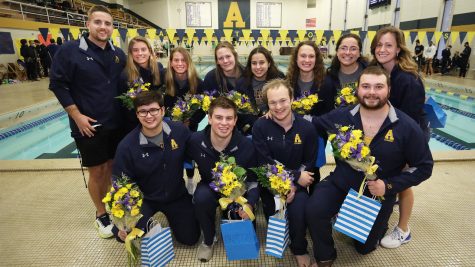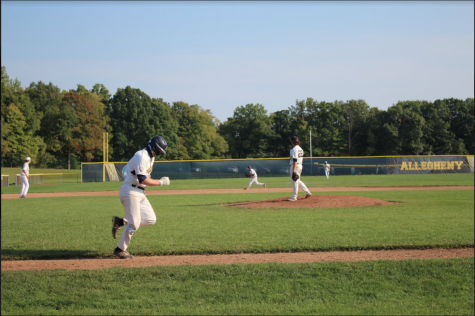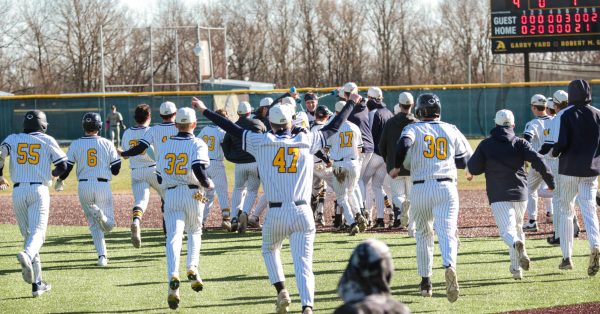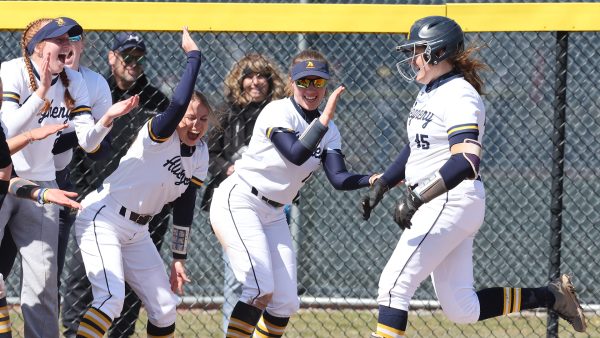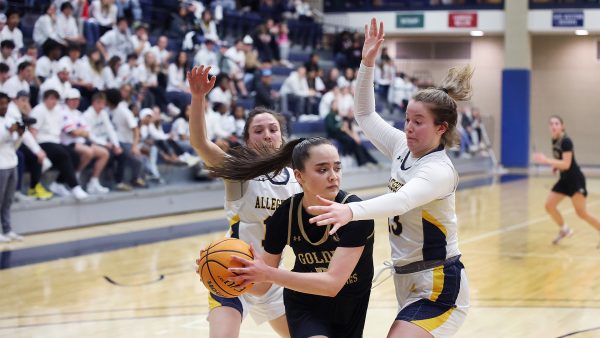Men’s and women’s swim teams teach children from Crawford County how to swim
While their season ended in February, the Allegheny swimming and diving team is making a splash in the Learn to Swim program which offers Crawford County children an opportunity to swim under the supervision of a student mentor.
The Learn to Swim program allows children in the community to learn the fundamentals of swimming through a series of sessions while forming a bond with other children and the Allegheny swimming and diving team.
The program initially started with the intention of bringing together both the Crawford County community and the Allegheny community through the lens of swimming.
This year, the program took place between March 30 and April 17 in order to raise funds for the swimmers’ winter training trip next semester. Classes are open to all children ages 3 to 15 who are striving to either learn the basics of swimming or hone in on skills and progress further.
“I like seeing when a little kid hops in the water and while they’re scared at first, after a day or two, they learn the small fundamentals. All of the sudden they have this confidence, sometimes they even surprise themselves and I think that’s a great scenario,” said Kumbier.
Each week, Learn to Swim brings in 80 to 100 children from Crawford County who are eager to learn the fundamentals of swimming.
Classes are taught by the 24 members of the swimming and diving team who each have a group of four to five, which is small enough to provide one-on-one, quality lessons.
Robin Baker, a mother from Connellsville, found out about the program from posters that were hung up in the school her two children attend.
“I think the small class size and the individual attention they get from quality swimmers is great. They really get one-on-one attention,” said Baker.
Baker continued to mention how important swimming is for a generation surrounded by technology.
“It’s good for them to get excited about a sport. They are the X-Box, Wii U generation so to get them outside to do anything is a good thing,” said Baker.
Learn to Swim has three levels of difficulty for swimmers. The session for beginning level swimmers is 30 minutes long, typically teaches children ages 3 to 6 how to float, kick and become comfortable and safe in the water.
The intermediate clinic is 45 minutes long and is catered to ages 5 to 12 who want to learn the the fundamentals of swimming such as swimming on their backs and becoming knowledgeable of the four strokes: breaststroke, freestyle, backstroke and butterfly.
The third session, the stroke clinic, is 60 minutes long for more advanced swimmers ages 8 to 15. According to Kumbier, those who are in the stroke clinic should know at least two of the strokes and be prepared to work on the other two.
“It takes more than one week to build habits,” Kumbier said.
Kumbier says that the program is about helping people and building community first, and swimming second.
“Any time you have an older student who is a role model, it is good for the community. Every time they can make another connection, even through swim lessons, is a good thing,” said Kumbier.
Race Mahoney, ’18, is one of the 24 members of the swim team who participate. Mahoney says that while finding ways to make the lessons easy to understand can be difficult especially within a young group, it is a rewarding experience.
“My favorite part is when the kids actually understand what I’m teaching them,” said Mahoney.
Jennifer McCall, whose 2-year old daughter is participating, is happy with how the program supports the children.
“We had her at the Y in the past, it didn’t seem like they were teaching her what we wanted her to and we heard this was the best place to go,” said McCall.
Another mom, Megan Bantic, is taking her daughter Jordyn for her second year despite the commute from Conneaut Lake.
She said that her daughter was unable to learn to swim right away, but is taking advantage of her opportunity now with the help of Learn to Swim.
“She had tubes in her ears as a child so she couldn’t swim right away. So I wanted once she was able to go under water, to get lessons with a life guard,” Bantic said.
Kumbier said that the program is a fun experience and an opportunity for growth both for the team and the swimmers they teach, even though the program can be hectic with a hundred or more children each week.



